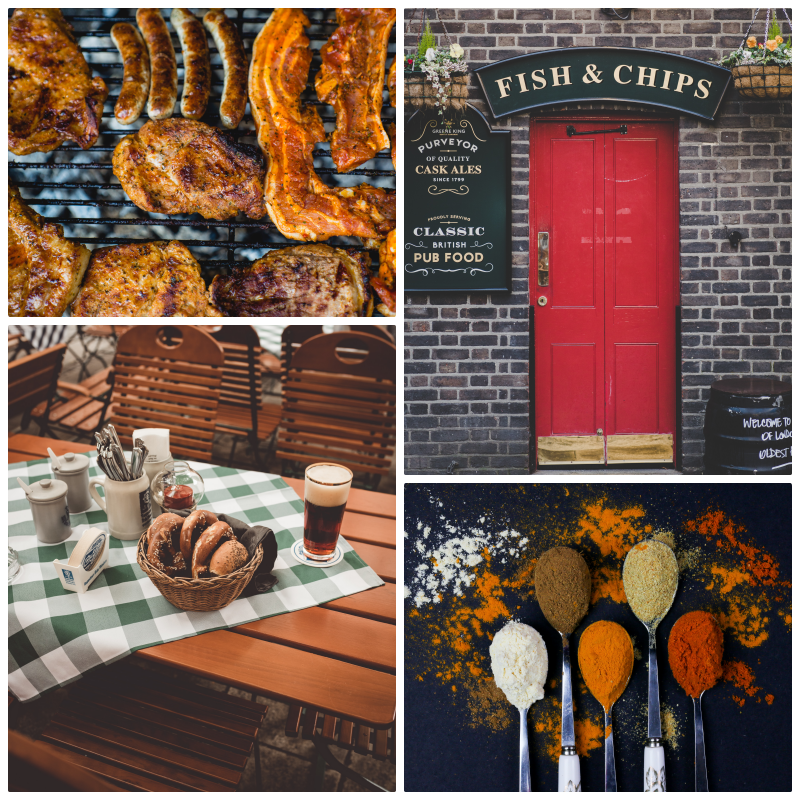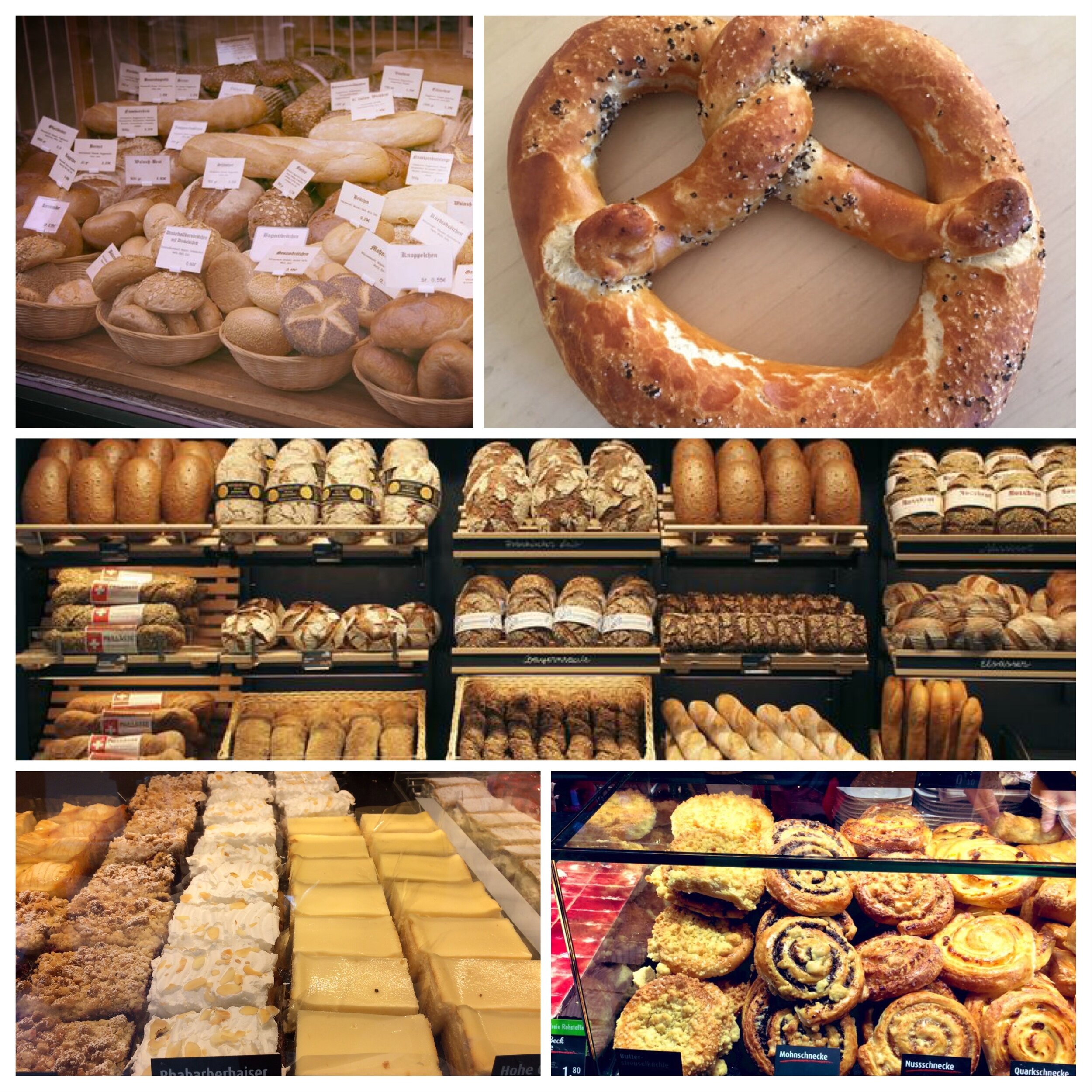The Spice of Life
Coming from a country that has a less than stellar culinary reputation, I’ve always been wary of criticising German food. Even the most moderate critique will be met by a cry of “Fish and Chips” or something similar, a way of reminding me that Britain is stereotypically considered a gastronomic desert, only populated with the bland and the tasteless. This is far from the truth, but the boil in the bag dinners of the 70s, and the delight taken over potato waffles has left an indelible mark on the reputation of UK food. Luckily for me, I quite enjoy German cooking, which means I’m usually the last person to moan about it, mainly because it isn’t a million miles away from the British food that so many people here readily mock.
It also helps that I’m not a fussy eater, which I credit to my parents who could remember rationing in the 1950s, and who would ignore any complaints made by my younger self. If I refused to eat something, there wasn’t going to be another offer, as my mother frequently reminded me and my siblings “This isn’t a bloody restaurant!”. Limited to what we got, we accepted our fate or went without, and nothing was ever as bad as not eating dinner, even the infamous night we were presented with a three layered Brussel sprout pie. Along with a lack of fussiness, I have no food allergies, although there was a night in the early 90s when being allergic to sprouts would really have been useful.
The way I look at German food, it’s basically the same as what’s on offer in Britain, but arranged and prepared in a slightly different way. For Kloß, see mince and dumplings; for Braten we have roast beef, and any fish dishes I may find, well, we all know what the British like to do once they’ve caught some fish. This doesn’t mean German food isn’t unique, it is; Spaetzle, Schupfnudeln, and Baunzen don’t really have any British equivalents, nor is there anything that would compare to Wurstsalad or Fleischsalat. Rollmops or Heringssalat may be fish, but not in the way the British might expect, nor is Grüner Soße, Kartoffelpuffer, or the famous Sauerkraut common on British plates. There’s range, regional variation, and a lot of things to try, that’s all without mentioning the hundreds of different Wurst that can be found.
Germany isn’t lacking in choices, although it’s not common to find all of these things available in one place. If you happen to live in one Bundesland, you may have to travel or wait for some special event to try what other states have to offer. In Britain there’s a limited range, but most pubs will serve the popular dishes, such as a Sunday roast, Shepherd's Pie, or Toad-in-the-Hole, but you’ll have to look further afield to get kippers or a Spotted Dick. Regional specialities like Haggis will usually only appear in England in the run-up to Burn’s Night, while I can’t remember ever seeing Welsh rarebit on the menu other than in Wales.
Yet like Britain, German food seems to suffer from a lack of enthusiasm among the international community. I routinely hear disparaging remarks about Deutsche Gerichte from various corners, but the most intense complaints come from Germans themselves, who often denounce their food as bland and uninteresting, especially when compared with other countries. On the whole, this is rather unfair. Every country has their forte, and every country has built their food culture based on what was to hand - if all you had was meat and potatoes, plus a few wild herbs and spices, you can’t really expect too much. You can only work with what you have, and though Germany has been limited in its ingredients, the regional nature of Germany’s historic development has led to some interesting results.
Britain had comparably basic ingredients, and therefore a similarly neutral palette, but they did have an empire that spanned 25% of the world, which brought much of the world’s cuisine to British tables. Sure, Toad-in-the-Hole isn’t brimming with adventurous flavours, but an antidote can be found in Indian food, to give just one example. We’ve had a long time to get used to curry, and it did take a long time, the first curry house, the Hindoostanee Coffee House, opened in 1810, but it wasn’t until the middle of the 20th century that Indian food would reach its current level of popularity. Germany may have had an empire, but not for any length of time, and certainly not long enough for it to change how Germans view their food. This is perhaps the crucial difference between German and British thinking when it comes to mealtime.
Exposure to the variety of different options around the world had the knock-on effect of changing British taste, meaning that although most traditional food stayed the same, new foods joined the menu, or fused with the old, culminating in one of Britain’s greatest achievements, the chicken balti pie. Indian food is obviously very popular, but it's not the only vestige of empire to be found on the menu. Caribbean food has grown in popularity, especially with the arrival of British Caribbean citizens on the Empire Windrush in 1948, while a wide variety of Middle Eastern food has also become a mainstay of British food culture. The introduction of such a wealth of variety has changed Britain, and made it more open to new types of food culture, and certainly more aware of the different spices that the world has to offer. This quiet culinary revolution means that spicy food is actually preferred by many people, although this does lead to overly masculine blokes competing to see who can eat the hottest curry on the menu.
Spicy food, or hot curries are not really a preference in Germany, although this is changing with the popularity of hot sauces, which are far more available than when I first arrived. Germany also has its own global influences, Turkish food being easily the most prevalent, but Croatian, Czech, Polish and Greek food can be found in most cities. Most of the time though, this food has to be modelled on German taste, which usually means reducing the quantity of spices, and crucially, the heat. Germans seem to baulk at too much seasoning, which some will cruelly attribute to an inherent German dislike of flavour. I don’t think this is true, there’s a curiosity, just not a fully fledged love for the spicier side of things.
This does create some strange side effects, especially as Indian food becomes more popular. Ordering Indian food in Germany can be a serious gamble, as there doesn’t seem to be an accepted standard, and more than once I’ve lost the Russian Roulette of ordering Vindaloo at an Indian restaurant. Sometimes it’s so mild it’s almost a korma, other times I have to furiously order more beers to prevent my mouth going nuclear, much to the enjoyment of my wife. It also causes other issues, such as when we make Mexican food at home and invite people over for dinner. What my wife and I consider “mild” has seen guests break out in sweats, and have to leave the table to walk off the effects of a little too much habanero.
Ultimately, I think you have to judge a nation's food on its merits. This being the case, German food can easily find a place among the pantheon of global cuisine. It may not have the strong flavours that other nations prefer, but that doesn’t make it any less delicious, nor does it mean that those who prefer it are somehow less cultured. We all have our preferences, built on our own national and family cultures, and that should be celebrated rather than ridiculed. My neighbours may enjoy their Schupfnudeln as tradition dictates, and I may prefer mine with some extra chillies thrown in, but there’s space enough for both, although I’m still careful not to mix up the plates when serving guests.
Proofreader: @ScandiTina
Image Credit
Photo by cottonbro studio
Photo by Meelan Bawjee on Unsplash
Photo by Markus Spiske on Unsplash
Photo by Pickled Stardust on Unsplash
Photo by Tamanna Rumee on Unsplash
Photo by Clay Banks on Unsplash
Photo by Laurenz Kleinheider on Unsplash








